Trump Administration Illegally Withheld N.I.H. Funding, Watchdog Finds

© Michael A. McCoy for The New York Times


© Michael A. McCoy for The New York Times


© Eric Lee for The New York Times


© Peter Turnley/Corbis/VCG, via Getty Images


© Eric Lee for The New York Times


The state of Florida is suing some of the biggest porn platforms on the internet, accusing them of not complying with the state’s law that requires adult sites to verify that visitors are over the age of 18.
The lawsuit, brought by Florida Attorney General James Uthmeier, is against the companies that own popular porn platforms including XVideos, XNXX, Bang Bros and Girls Gone Wild, and the adult advertising network TrafficFactory.com. Several of these platforms are owned by companies that are based outside of the U.S.
Uthmeier alleges that the companies are violating both HB3 and the Florida Deceptive and Unfair Trade Practices Act.
On January 1, Florida joined 19 other states that require adult websites to verify users’ ages. Twenty-nine states currently have nearly identical legislation enacted for porn sites, or have bills pending. Age verification legislation has failed in eight other states.
“Multiple porn companies are flagrantly breaking Florida’s age verification law by exposing children to harmful, explicit content. As a father of young children, and as Attorney General, this is completely unacceptable,” Uthmeier said in a press release about the lawsuit. “We are taking legal action against these online pornographers who are willfully preying on the innocence of children for their financial gain.”
The Free Speech Coalition along with several co-plaintiffs, including the sex education platform O.school, sexual wellness retailer Adam & Eve, adult fan platform JustFor.Fans, and Florida attorney Barry Chase filed a challenge to Florida’s law earlier this month. “These laws create a substantial burden on adults who want to access legal sites without fear of surveillance,” Alison Boden, Executive Director of the Free Speech Coalition, said in a press release published in December. “Despite the claims of the proponents, HB3 is not the same as showing an ID at a liquor store. It is invasive and carries significant risk to privacy. This law and others like it have effectively become state censorship, creating a massive chilling effect for those who speak about, or engage with, issues of sex or sexuality.”
 404 MediaEmanuel Maiberg
404 MediaEmanuel Maiberg
After the Supreme Court upheld Texas’ age verification legislation in June, the Free Speech Coalition dropped the lawsuit in Florida. "However, we are continuing to monitor the governmental efforts to restrict adults' access to the internet in Florida," Mike Stabile, the director of public policy for the Free Speech Coalition, said in a statement to the Tallahassee Democrat. “The Paxton decision does not give the government carte blanche to censor content it doesn't like.”
Experts say, and more than a year of real-world anecdotal evidence has shown at this point, that age verification laws are invasive of user’s privacy, chilling for Constitutional adult speech, and don’t work to keep children away from potentially harmful material.
As it has in many states once age verification legislation went into effect, Pornhub pulled access from Florida entirely on January 1, replacing the homepage with a video message from activist and performer Cherie DeVille: "As you may know, your elected officials in Florida are requiring us to verify your age before allowing you access to our website," DeVille says. " While safety and compliance are at the forefront of our mission, giving your ID card every time you want to visit an adult platform is not the most effective solution for protecting our users, and in fact, will put children and your privacy at risk.”


© David Zalubowski/Associated Press
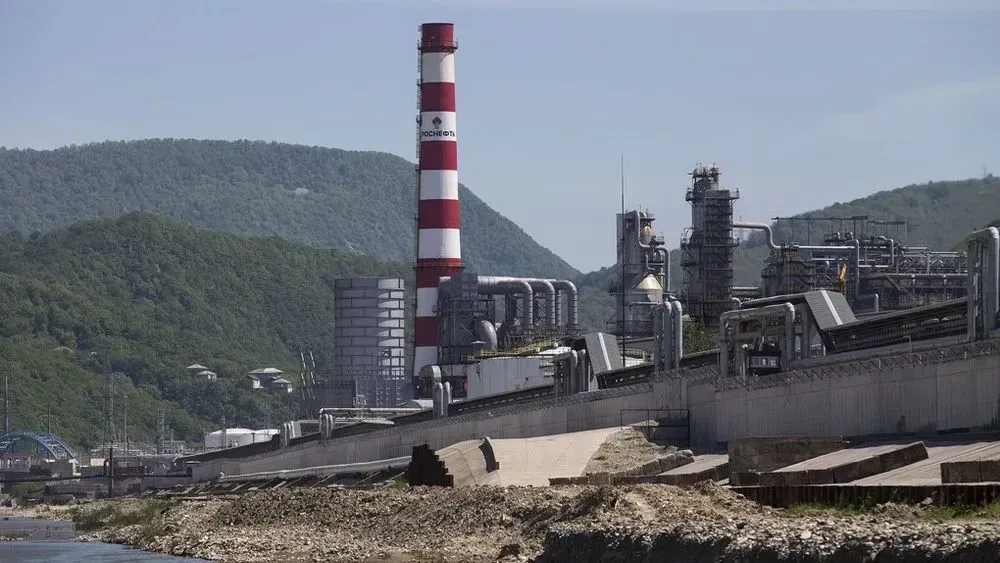

Russia is losing petrodollars. In July 2025, Russia suffered a significant financial blow: oil-related budget revenues dropped by nearly 33% compared to the previous year, according to Bloomberg.
A official Russian Finance Ministry says that the country collected only $8.9 billion in oil-related taxes. Combined oil and gas revenues fell by 27%.
Despite a short-term 71% increase in the price of Russian export oil in July, the first such jump in five months, petrodollars flowing into the budget declined. Global crude prices spiked sharply at that time due to warfare in the Middle East.
Benchmark oil prices, however, have dropped year-on-year, as Trump’s trade policies threaten to slow the global economy while OPEC+ ramps up production faster than expected.
The strengthening of the ruble also contributed to lower revenues, as revaluation means oil companies receive fewer rubles per barrel they pump and sell. In June, the ruble hit its strongest exchange rate in two years: 78.71 per dollar. This means oil and gas companies earn less in rubles for exports. In 2024, they earned 6,127 rubles per barrel, now only 4,711.
However, lower global prices for crude and refined oil products have allowed the government to cut subsidies paid to Russian refineries.
These subsidies partially compensate for the price difference between domestic and export fuel, aiming to boost domestic gasoline and diesel supply. In July, the budget allocated 58% less for this purpose compared to the previous year.


Ukraine’s allies will spend millions of dollars for weapons for Kyiv. Sweden, Norway, and Denmark have jointly allocated over $500 million to purchase American weapons for Ukraine, President Volodymyr Zelenskyy announces.
The funds come as part of the new Priority Ukraine Requirements List or PURL initiative, which allows European partners to quickly finance arms deliveries from the US.
“Plus $500 million — the total amount from our friends in Northern Europe… This will be implemented under NATO coordination,” Zelenskyy says.
According to the new mechanism, Ukraine compiles a list of priority needs in packages of approximately $500 million. Then, the partner countries can:
This approach significantly speeds up logistics and replenishment of allied arsenals.
The Ukrainian president has thanked the prime ministers of Sweden, Norway, Denmark, and NATO Secretary General Mark Rutte for their concrete support that “increases Ukraine’s capacity to protect lives.”
“This will be a good example for other NATO countries… to guarantee protection against Russian strikes,” Zelenskyy emphasizes.
The PURL initiative becomes a new bridge between America and Europe in the defense sector, and another signal to Moscow: Western support is not weakening but growing.
The Ukrainian president has stressed that such projects strengthen Ukraine’s own defense production as well as joint defense initiatives with partners. This builds a new architecture of European security based on powerful cooperation.
“Russia will never turn Europe into a continent of war… we guarantee that peace will prevail,” Zelenskyy states.
In just two days, Ukraine received nearly $1 billion in international arms aid — after €500 million from the Netherlands, another half a billion came from Northern Europe.


© Terry Ratzlaff for The New York Times


© Visual China Group, via Agence France-Presse — Getty Images
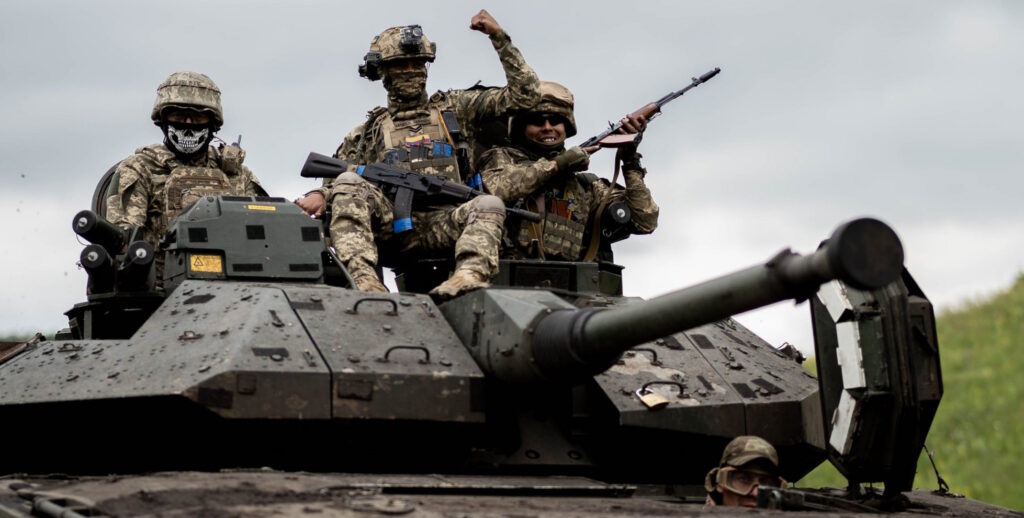

Ukraine’s Defense Intelligence “Timur” Special Unit has crashed Russia’s advance on Sumy Oblast. The fighters have eliminated eight Russian companies in Sumy Oblast, the agency reports.
The Timur Special Unit has taken part in legendary operations, including:
“The enemy’s advance has been halted. Their food and ammunition supply lines have been cut,” explains Ukraine’s military intelligence.
The operation involved 11 combat detachments under the Timur Special Unit. As a result of the mission:
According to the Defense Intelligence, Ukrainian soldiers executed a series of swift raids deep into Russian-controlled territory, effectively deploying FPV drones, artillery, grenade launchers, and small arms in close-quarters combat.
“Based on intercepted communications, Russian soldiers gave fabricated excuses to avoid storming positions within the Timur Unit’s area of operation,” says the agency.
In early August, Russia intensified its assaults on the Sumy front, launching frequent artillery, missile, and air strikes. In July alone, 23 civilians were killed, and over 140 were wounded, according to Oleh Hryhorov, head of the Sumy Regional Military Administration.
“In July, there were 2,700 Russian attacks on Sumy Oblast, with more than 800 air-dropped bombs, 250 kamikaze drone strikes, and 52 missile strikes,” Hryhorov says.


© Pete Marovich for The New York Times


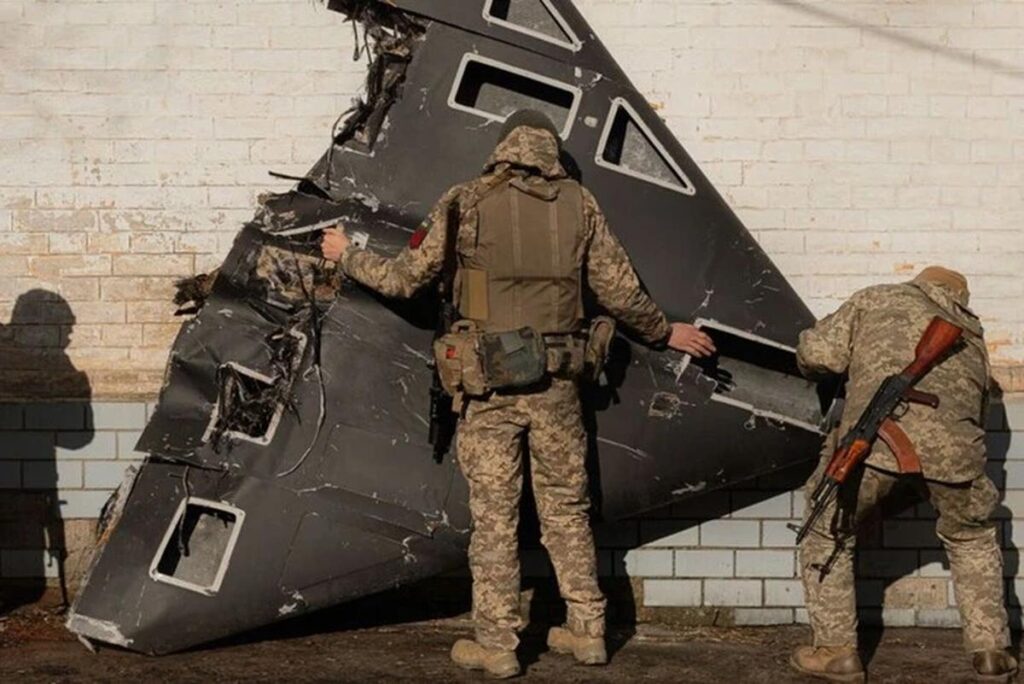

Ukraine has discovered Indian electronics in Iranian-designed Shahed drones used by Russian forces to attack civilian areas. Indian media report that Kyiv raised the issue with both India and the EU, citing specific Indian-made components embedded in these weapons.
Hindustan Times reports that Ukrainian authorities identified parts made or assembled in India inside Shahed 136 unmanned combat aerial vehicles (UCAVs). These drones have been used by Russia in mass strikes on Ukrainian cities since 2022.
According to the documents reviewed by the outlet, a Vishay Intertechnology “bridge rectifier E300359” assembled in India was found in the drone’s voltage regulator. A signal generator chip AU5426A by Aura Semiconductor was located in the satellite navigation system.
The report states that Ukraine raised the issue with India’s external affairs ministry on at least two occasions. Ukrainian diplomats also brought it up with EU sanctions envoy David O’Sullivan during his mid-July visit to New Delhi.
India’s foreign ministry responded that its dual-use exports follow international non-proliferation rules and domestic regulations. Vishay Intertechnology did not respond to the paper’s request for comment.
Aura Semiconductor, whose AU5426A chip was identified in the drones, said in a statement that it complies fully with export control laws and is “deeply disturbed” by the possibility of its components being misused. It added that its chip is plug-and-play, making user tracing difficult, and that an internal audit yielded no conclusive findings.
Hindustan Times cites unnamed sources saying some Indian components were legally exported to West Asia, then diverted to Russia or Iran.
Ukraine’s HUR defence intelligence agency has also found electronics from US and Chinese firms in Russian weapons.
Ajay Srivastava from the Global Trade Research Initiative told Hinndustan TImes that tracing dual-use items post-export is almost impossible, and said better exporter awareness is needed. He warned that no export control system can guarantee full oversight once items cross national borders.


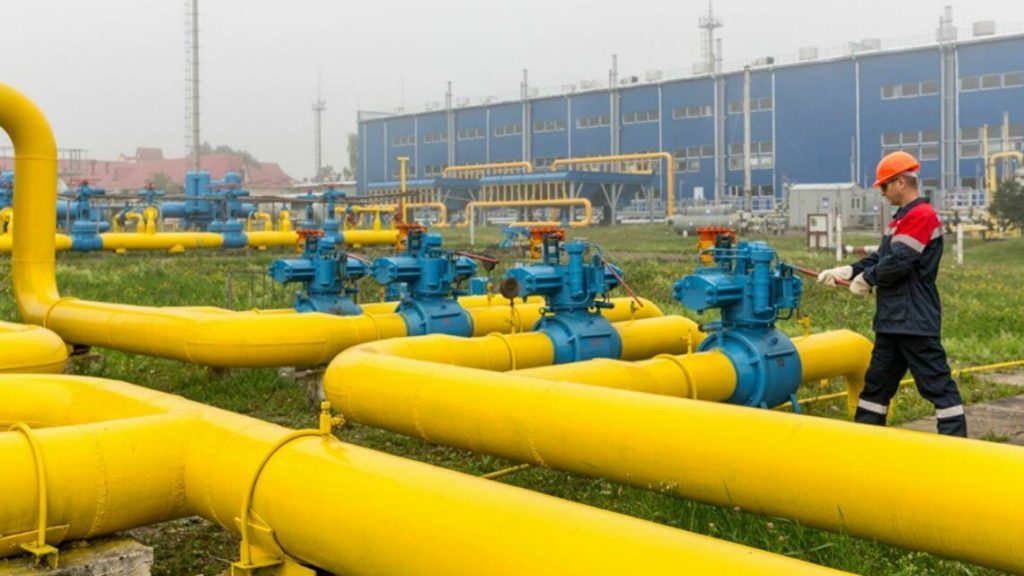

Russia will pay. Ukraine’s national energy company, Naftogaz, has announced it has received official approval from the Vienna District Court to initiate forced enforcement of the largest arbitration award against Russia, worth over $5 billion.
Due to the Kremlin’s refusal to pay voluntarily, Naftogaz has launched procedures to seize Russian assets worldwide.
Based on the Austrian court decision, more than 20 pieces of Russian state-owned real estate in Vienna have been seized, with a total value exceeding €120 million.
These assets will be sold, and the proceeds transferred to Ukraine as part of the compensation awarded in The Hague.
“This is another practical step towards collecting over $5 billion from Russia for the illegal seizure of Naftogaz Group’s assets in Crimea. Russia will pay for everything,” says Naftogaz CEO Serhii Koretskyi.
Naftogaz is represented in Austria by the DORDA law firm. The team includes partner Alexander Karl, lead counsel Robert Keimmelmayr, and Therese Stingl.
The seized property includes shares in gas pipelines, equipment, licenses for subsoil use, and over 675 million cubic meters of gas in underground storage, all of which Russia seized during the occupation of Crimea.
Naftogaz was a key player in Crimea’s gas market, responsible for exploration, production, transportation, processing, and distribution of gas.
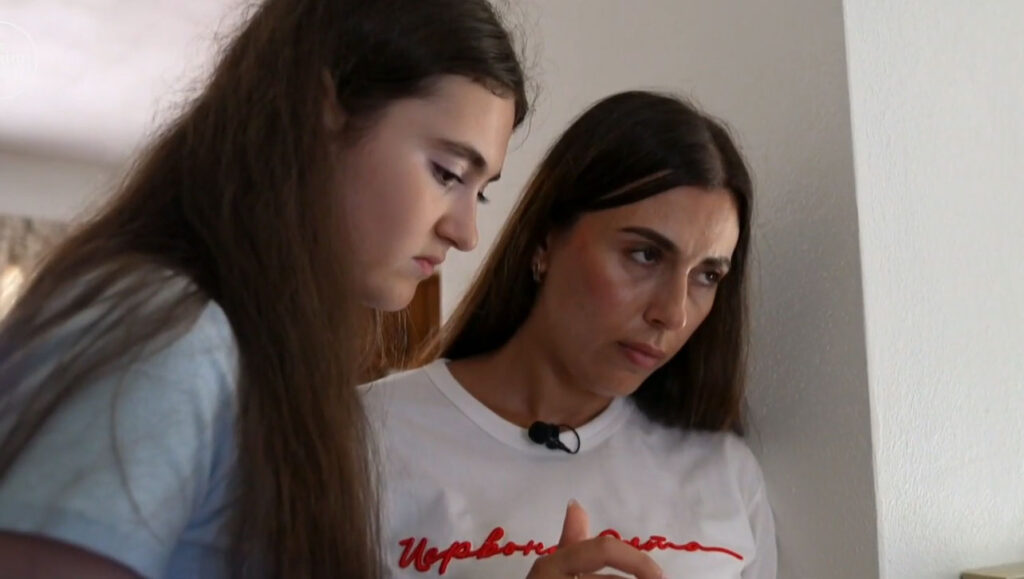

Ukrainian refugees work permits are set to expire, leaving many families in legal limbo, CBS News reports. Dozens who fled war and rebuilt their lives in Iowa may soon lose the right to work.
CBS News reports that Liana Avetisian and her family fled Ukraine in 2023 and resettled in DeWitt, Iowa, where over 75 refugees found jobs and housing with help from locals like Angela Boelens and her group Iowa Nice.
Avetisian, once a real estate agent in Kyiv, took a job at a window company. Her employer, Sam Heer, told CBS News he values Ukrainian workers and wants more Ukrainians, he said, after hiring Avetisian, her husband, and her cousin—until their permits expired.
“These people are hard to come by. […] When people do the right things and follow the rules, they should be rewarded,” he added.
Though Heer supported President Trump in 2024, he now urges the administration to reconsider.
Most European countries have renewed work permits for Ukrainian refugees. But the Trump administration froze all immigration applications from Ukraine and Latin America earlier this year.
Boelens says many more permits will soon expire, pushing families to the edge.
“It’s not safe to go back to Kyiv,” she told CBS News.
Avetisian agrees. Her mother sends her daily videos of Kyiv under attack.
“Every day, every night, it’s bombing,” she said.
Refugees like Avetisian say they only want to stay and keep working in the communities they’ve come to call home.
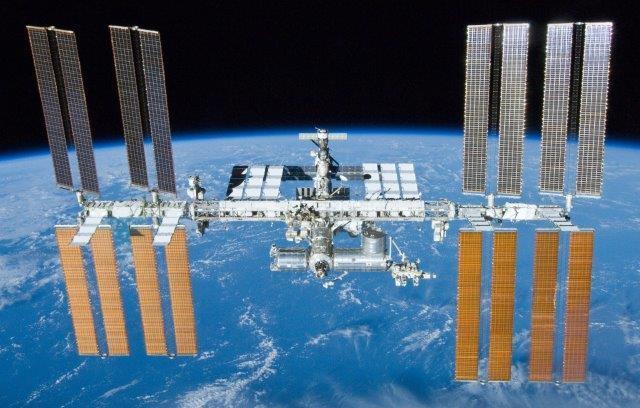

The US, China, and Russia are competing to build the first nuclear reactor on the Moon. If Beijing and Moscow succeed ahead of Washington, they could declare parts of the Moon a “restricted zone,” potentially limiting American access, warned US Transportation Secretary Sean Duffy, The New York Times reports.
This ambitious project reflects the deepening of China-Russia strategic alliance, which is positioned as anti-American. Russia’s losses in Ukraine are weakening Moscow’s position, which could affect their partnership. Earlier, Chinese Foreign Minister Wang Yi stated that China does not want to see Russia defeated in the war, as a Ukrainian victory would prompt the US to shift its full attention to China.
China and Russia are planning to install the reactor by the mid-2030s as part of a joint effort to construct a permanent lunar base.
In response, Washington is ramping up efforts to deploy its own nuclear power plant on the Moon. According to a new NASA directive:
A single lunar “day” lasts about 28 Earth days, which means 14 days of light, followed by 14 days of complete darkness. This makes solar power unreliable, especially for continuous life-support operations. A nuclear reactor offers constant, reliable energy, even during the long lunar night.
In 2022, NASA signed three $5 million contracts for early nuclear reactor prototypes, but the new directive calls for faster, larger-scale development.
The first Artemis crewed landing is tentatively scheduled for 2027, though many experts are skeptical about that timeline. Many of the essential components, including the lunar landing module Starship, which SpaceX is developing, have not yet been tested. The Trump administration wants to transition to using commercial rockets and spacecraft instead of the Space Launch System rocket and Orion capsule, which NASA has been working on for over a decade.
A reactor would be useful for long-term stays on the Moon, especially during the two-week-long nights, but NASA’s plans do not specify when a lunar base might be built.


© Lisi Niesner/Reuters


© The New York Times


© United States Army
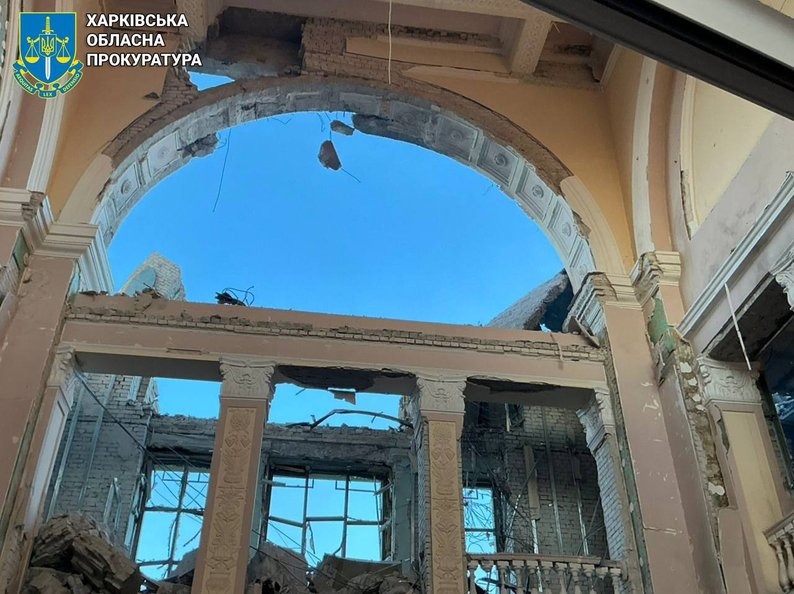

Russia’s Lozova drone strike killed a railway worker and injured civilians, including two teenagers, during Russia’s heaviest drone and missile attack on the city since the start of the full-scale war. According to the Ukrainian Air Force and local officials, the assault overnight on 5 August 2025 involved 46 Shahed-type and decoy UAVs, and a ballistic Iskander-M missile.
The Ukrainian Air Force reported that from 19:00 on 4 August, Russia launched an air attack from the directions of Kursk, Bryansk, Oryol, and Primorsko-Akhtarsk in Russia, using Shahed drones, UAV decoys of various types, and an Iskander-M missile from Bryansk Oblast.
Ukraine’s air defenses, including aviation, anti-aircraft missile units, electronic warfare, and mobile fire groups, intercepted or suppressed 29 drones by 08:00.
“Hits from 17 drones were recorded in the eastern direction, as well as one ballistic missile, and debris from downed drones fell in three locations in the southern and northeastern directions,” the Air Force wrote.
In Lozova, Kharkiv Oblast, a massive drone strike killed one person and injured others, local authorities reported. The mayor of Lozova, Serhii Zelenskyy, said that critical infrastructure, high-rise buildings, detached houses, and an educational institution were damaged. He noted that emergency services, medics, and rescue workers were operating on site and that restoration of water supply was underway.
Zelenskyy added that parts of the city remained without power, including Avylivka and the Katerynivskyi district. Public transport routes were also affected.
Images released by the Kharkiv Oblast Prosecutor’s Office show damage at the Lozova railway station, including a collapsed roof. The station was temporarily closed, and changes were introduced to suburban train services, the city council and Ukrzaliznytsia reported.
Trains Nos. 66/65 and 166/165 on the Uman–Cherkasy–Kharkiv route were redirected via an alternate path. Passengers to and from Lozova were being transported by bus to the Paniutyne station. Ukrzaliznytsia warned of delays of up to one hour due to use of a reserve locomotive.
According to the State Emergency Service, six fires broke out in Lozova as a result of the drone strike. Destruction of other buildings was also recorded.
The Kharkiv Oblast Prosecutor’s Office clarified that Russia has used over 30 Shahed-type attack drones — for some reason, the Kharkiv local authorities and prosecutor’s office always refer to them as “Geran-2” by their Russian designation.


© The New York Times


© Mike Blake/Reuters


© Samuel Corum/EPA, via Shutterstock


© Kenny Holston/The New York Times


© Pool photo by Evgenia Novozhenina


© Anna Watts for The New York Times


© Anna Watts for The New York Times


On the occupied peninsula, Russia’s repressive machine sees the Ukrainian flag as a greater threat than the swastika. According to the civil organization Crimean Process, in the past six months in occupied Crimea, there have been three times more court cases against supporters of Ukraine than against individuals promoting Nazi symbolism.
Moreover, 56% of all cases related to the display of banned symbols involved pro-Ukrainian citizens.
“People who demonstrate pro-Ukrainian views are not only prosecuted more frequently, but also subjected to humiliation, fabricated charges, and moral pressure through propaganda in the media,” the report states.
Of 96 cases analyzed under Article 20.3 of Russia’s Code of Administrative Offenses, the largest share of charges were directed at Ukrainian sympathizers.
26% of “Ukrainian” cases resulted in arrest, while none of the criminal subculture defendants were imprisoned. Nearly half of the cases against Ukrainians included additional charges, such as hooliganism or “discrediting the army.” In contrast, not a single case involving Nazi symbols included such add-ons.
“Any manifestation of Ukrainian national identity, patriotism, or resistance to occupation is viewed by Russian authorities as a threat to ‘stability’ and ‘security,’” human rights activists say.
In addition, judges in “Ukrainian” cases more frequently violate procedural norms:
Human rights defenders stress: this is selective justice, where patriotism is punished more harshly than overt hate.


A powerful explosion cut power to the Russian military base in Zaporizhzhia Oblast late on 3 August. The blast temporarily occupied the city of Berdiansk and destroyed a power substation that supplied electricity to the base located at the former Berdianski Zhnyvarky factory, UkrInform reports, citing its source in Ukraine’s Defense Intelligence.
Since the start of Russia’s all-out war in 2022, Berdiansk has remained under occupation. The city has suffered extensive destruction, water and power outages, explosions at the port, and an aggressive campaign of Russification, including persecution of citizens with pro-Ukrainian views.
The energy strike triggered a fire, disabling a key element of the occupiers’s logistics infrastructure.
According to Ukraine’s Defense Intelligence, the explosion and ensuing fire disabled transformers that powered the facility where Russian troops repaired military vehicles and stored weapons.
“The final consequences of the explosion and the extent of the damage are still being clarified,” says Defense Intelligence source.
Local residents were the first to report the powerful blast, posting videos and photos on social media. The surrounding streets lost power, and social media posts confirmed the fire at the substation.
After the capture of Berdiansk, Russian occupying forces converted the plant’s workshops into a repair hub, arms depot, and barracks. Damaged vehicles from the front were brought here for repairs before being sent back to the battlefield.
The destruction of the facility’s power supply seriously disrupts the occupiers’ logistics and hampers their ability to repair equipment.


Six individuals have been served with notices of suspicion for involvement in a corruption scheme involving the procurement of military equipment, reports the National Anti-Corruption Bureau of Ukraine (NABU).
This is the first major report by Ukraine’s anti-corruption agencies since a controversial law restricting their independence was signed and later reversed after street protests.
According to the report, among the suspects are government and military officials, as well as executives from drone manufacturing companies.
NABU and the Specialized Anti-Corruption Prosecutor’s Office (SAPO) say they have exposed a “large-scale corruption scheme in the procurement of UAVs and electronic warfare systems” operating during 2024-2025.
According to NABU, the suspects systematically embezzled funds from local government budgets that had been allocated to the Defence Forces.
President Zelenskyy has reportedly dismissed four officials from their posts since the notices were served.
NABU identified the six suspects as:
On 2 August, 2025, NABU and SAPO reported their findings to Zelenskyy. The scheme allegedly involved a sitting member of Zelenskyy’s Servant of the People party, whose faction membership was dismissed that day. Dismissals of the local government and military officials followed on the same day.
This report comes shortly after attempts by the Ukrainian government to stifle the work of the national anti-corruption agencies. A controversial bill restricting NABU and SAPO’s autonomy was recently passed by parliament and signed into law by Zelenskyy.
This decision sparked nationwide protests. Within 4 days, Zelenskyy submitted a draft bill to reverse the restrictions and restore the agencies’ independence.
This is NABU and SAPO’s first major investigation report since this incident that brought renewed attention to the importance of Ukraine’s anti-corruption organizations.
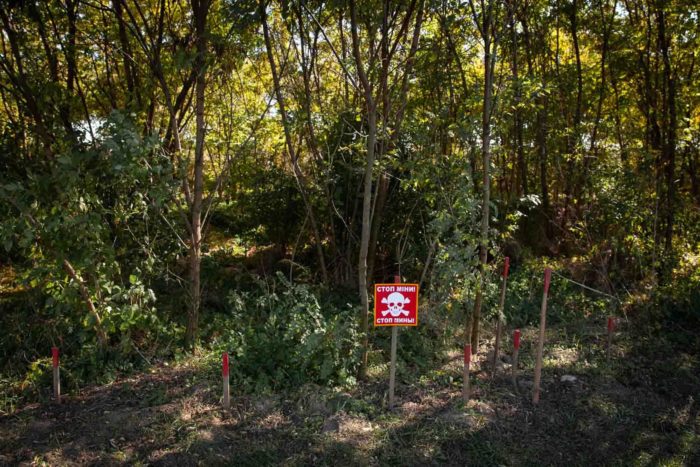

Ukraine will take another step toward the safe de-occupation and clearing of war remnants. On 4 August, Ukraine’s Ministry of Defense announced that sappers from the Ukrainian Armed Forces and the State Special Transport Service will be trained at the Regional School for Humanitarian Demining at the Lebanese Mine Action Center.
As of August 2025, Ukraine is the most mined country in the world. Official data shows that over 139,000 square kilometers of Ukrainian territory are potentially contaminated with mines and explosive ordnance, amounting to nearly 40% of the entire country.
The program will be funded by the French government. Lebanon was chosen due to its extensive experience in post-conflict land clearance.
“We thank the Government of the French Republic and the French people for their support in the fight against the Russian aggressor,” says Colonel Ruslan Berehulia, head of the Main Department for Mine Action.
Agreements were reached during a Ukrainian delegation’s visit to France, where Defense Ministry representatives met with:
They discussed:
The French side confirmed its ongoing commitment to support Ukraine not only financially, but also through:
This partnership strengthens Ukraine’s ability to clear liberated territories and reduce civilian risks in the long term.


Some 140 German investigators have conducted large-scale raids at Spinner, a high-precision machine tool manufacturer suspected of knowingly supplying equipment to Russia’s military industry. Three individuals have already been charged with violating sanctions.
In 2023, Ukrainian anti-corruption bodies urged German authorities to halt exports of Spinner’s high-precision machines to Russia via Türkiye. One such CNC machine was reportedly produced for a Russian factory producing high-explosive fragmentation shells for use in Ukraine.
German law enforcement searched Spinner Werkzeugmaschinenfabrik GmbH’s offices in several German cities and abroad. Eight prosecutors were involved in the investigation.
According to the investigation, the company may have knowingly sold 20 machines to Russia for a total of €5.5 million, despite the sanctions.
Despite the company’s claims about “compliance systems” and “lack of knowledge” about the end user, investigators say otherwise. Sources indicate the deliveries may have gone through third countries, particularly Turkiye, Bloomberg reports.
“Sanctions enforcement must work like this — with documents, equipment seizures, and court proceedings,” experts say.
Circumventing sanctions is now a criminal offense in the EU, meaning those found guilty could face prison time, not just fines.


© Tierney L. Cross/The New York Times


© Tierney L. Cross/The New York Times


© Hamza Abdullah Mohammed/iStock, via Getty Images
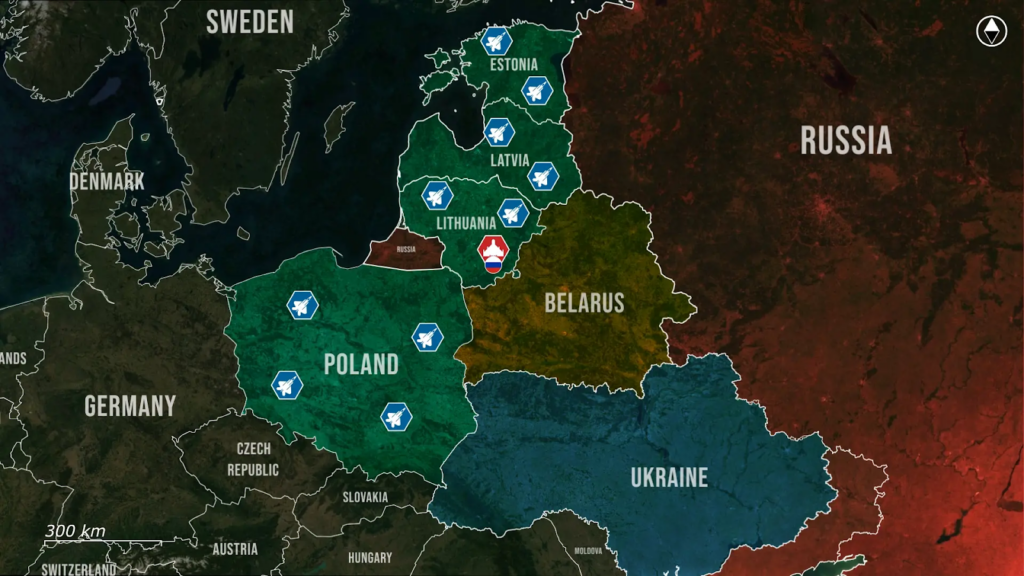

Day 1257
On 3 August, the biggest news comes from Eastern Europe.
Here, a Shahed-type drone flew directly into Lithuanian airspace and passed over the capital, marking a serious escalation in Russia’s aerial provocations against Nato’s eastern flank. Poland’s air force is already on a nightly high alert, and now the rest of the Baltics are joining in, raising what increasingly resembles an iron Curtain in the air.
Recently, a Russian Shahed-like drone crossed into Lithuanian airspace from Belarus and flew over the outskirts of Vilnius, the capital of Lithuania, close enough for civilians to see and film the device in flight. Initial fears suggested a live munition had entered Nato airspace, as Shaheds are often fitted with fragmentation, thermobaric, incendiary, or delayed-fuse warheads to cause maximum casualties and damage to civilian property.
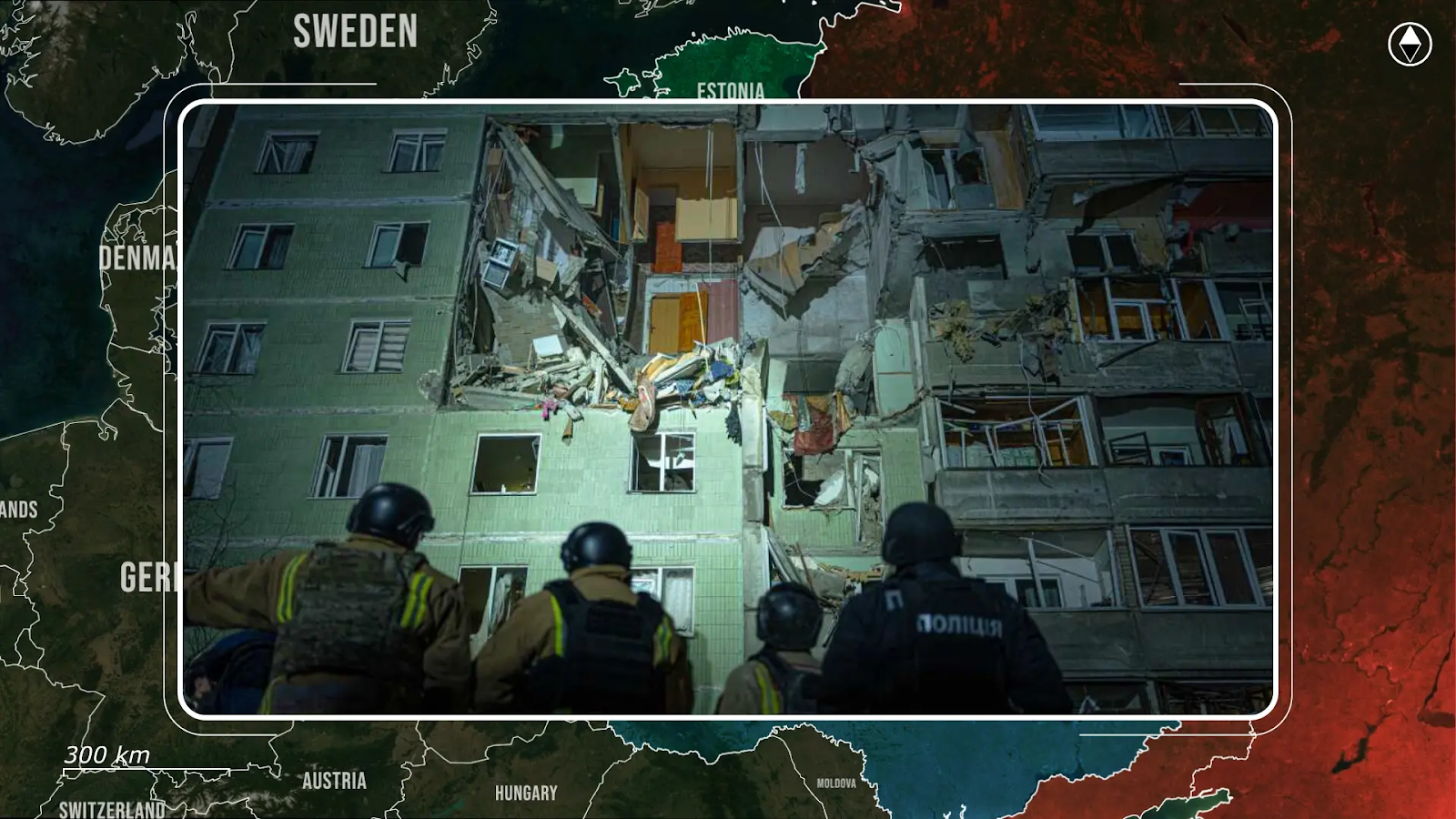
Fortunately, upon further inspection of the video footage, the object was identified as a Gerbera decoy drone, a visually similar platform Russia uses for both reconnaissance and saturation purposes during their daily strikes on Ukrainian cities.
While unarmed, the drone crossed directly over a Nato capital, far from any logical flight path to Ukraine, making it clear that this was no accident.
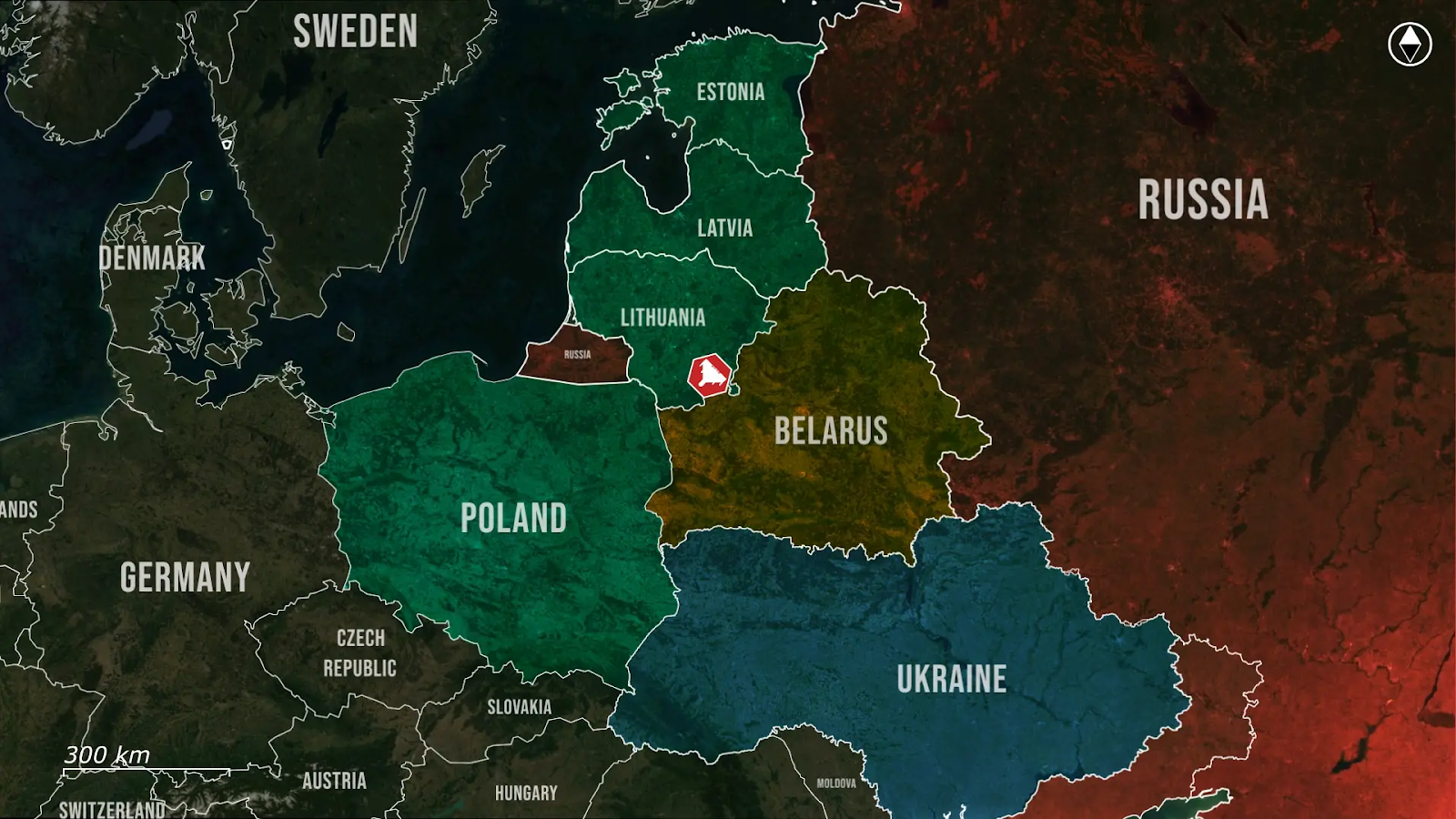
Instead, it was a calculated decision to test Nato’s reaction time, radar coverage, and political tolerance for such direct aerial threats and provocations, and critically, Lithuanian forces did not intercept.
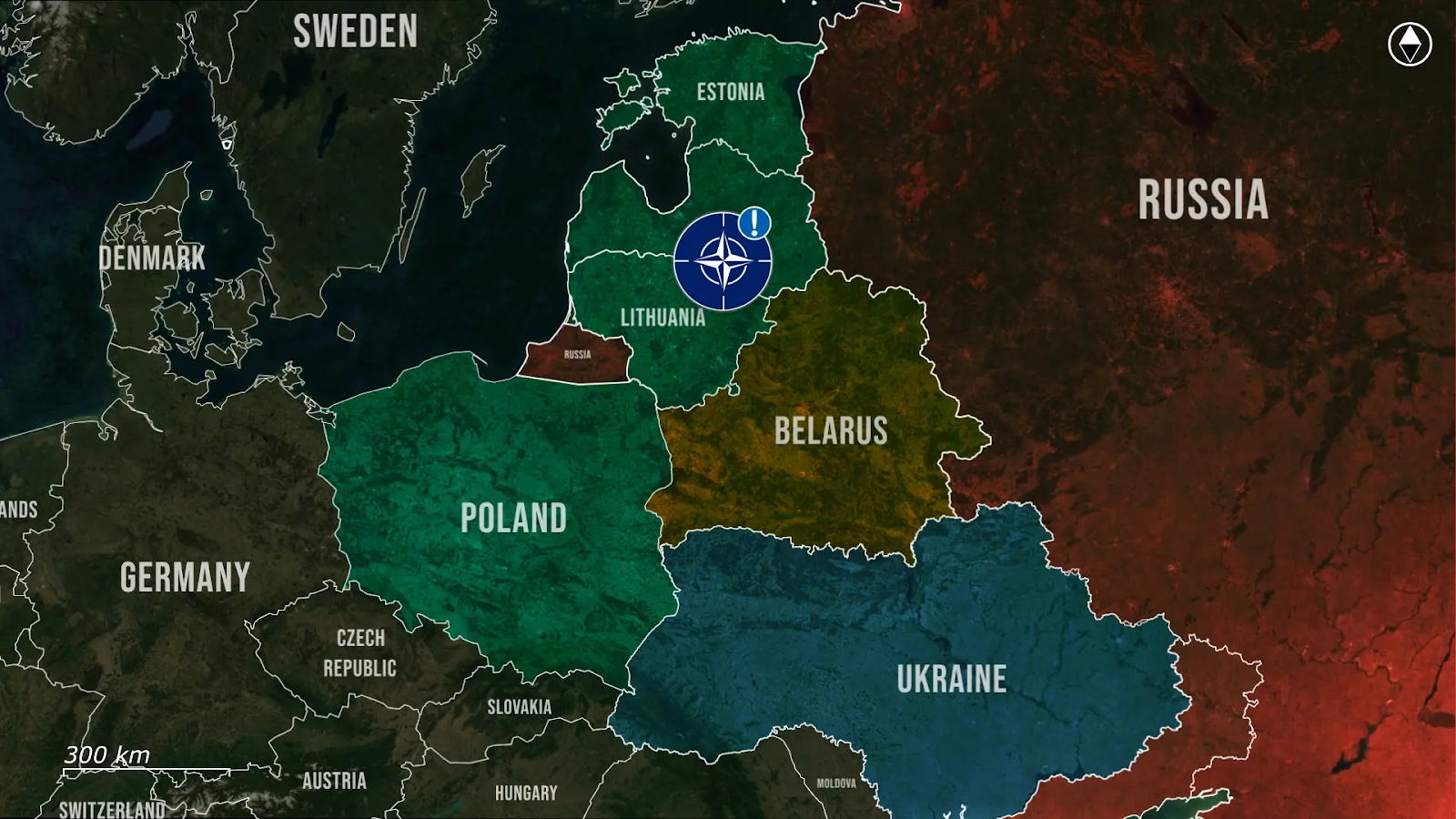
Poland, meanwhile, has entered a state of routine high alert, with Polish and Nato forces scrambling jets and raising radar systems every time Russia launches a large-scale assault on Ukraine, which happens every night and now often even during the day as well. Nato partners, including Swedish Gripens, are now joining Poland in maintaining a high alert status during Russia’s large-scale drone and missile attacks on Ukraine, reinforcing joint readiness across the eastern flank. While these alerts are precautionary, they have become the new norm, as the Polish border lies directly behind the approach paths of Russian missiles and drones targeting western Ukrainian cities. This proximity means any technical malfunction or mid-course deviation could result in a direct violation of Polish airspace, as seen in previous incidents, including when debris from Russian missiles entered Polish territory in 2022, or when a Ukrainian air defense missile landed on a Polish field, killing two farmers.
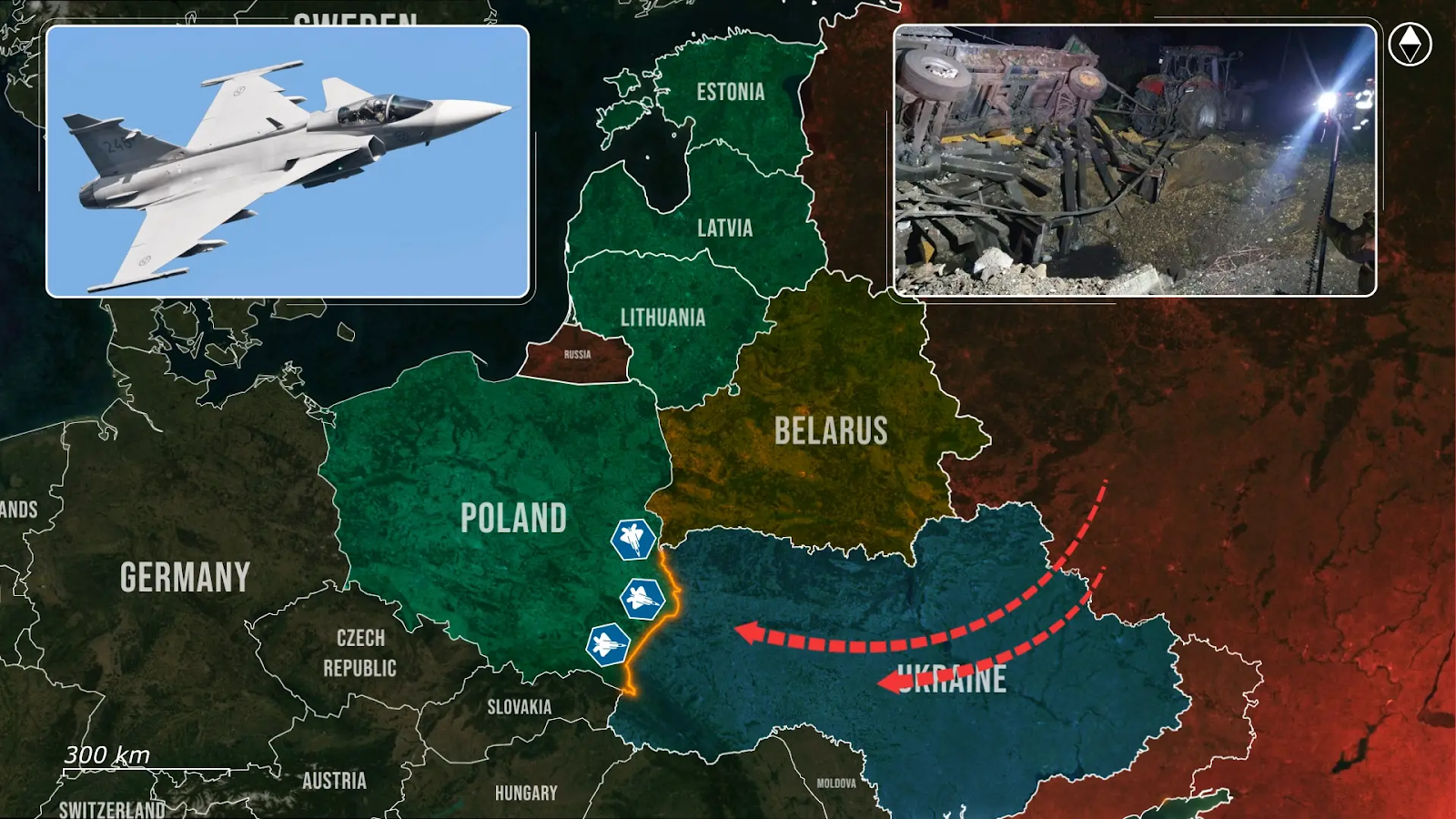
Unlike the calculated provocation over Vilnius, Poland faces a more constant strain of nightly threats, scrambling fighters, activating radar grids, and maintaining alert in civilian areas without knowing whether each launch might cause military objects to cross into its airspace. Across the Baltics, Lithuania, Latvia, and Estonia have long depended on Nato’s Baltic Air Policing mission, with Hungary, Italy, and Spain being part of the current rotation, maintaining quick-reaction alert status and integrated into Nato’s broader air defense system.
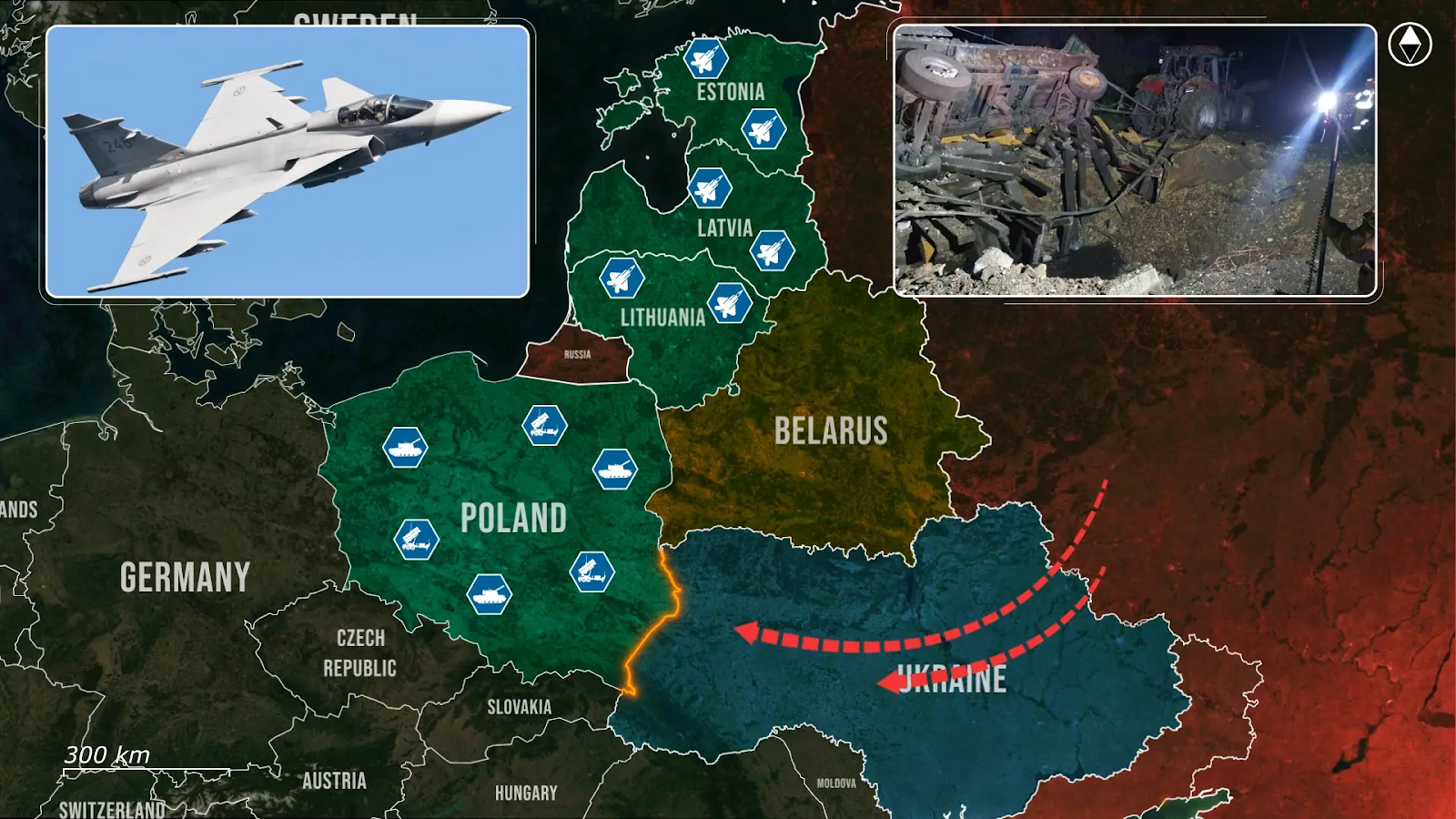
However, the unchallenged drone over Vilnius shows the limits of deterrence alone, and Lithuania is now accelerating the deployments of Ukrainian-developed acoustic drone detection systems, seeking to fill gaps in its early warning networks exposed by the most recent airspace violation.
At the same time, the Baltic states are reinforcing their readiness for both air-to-air and ground-to-air engagements by expanding joint training protocols, adapting quick-reaction procedures, and integrating new detection systems designed to counter the threat of low-flying unmanned platforms.
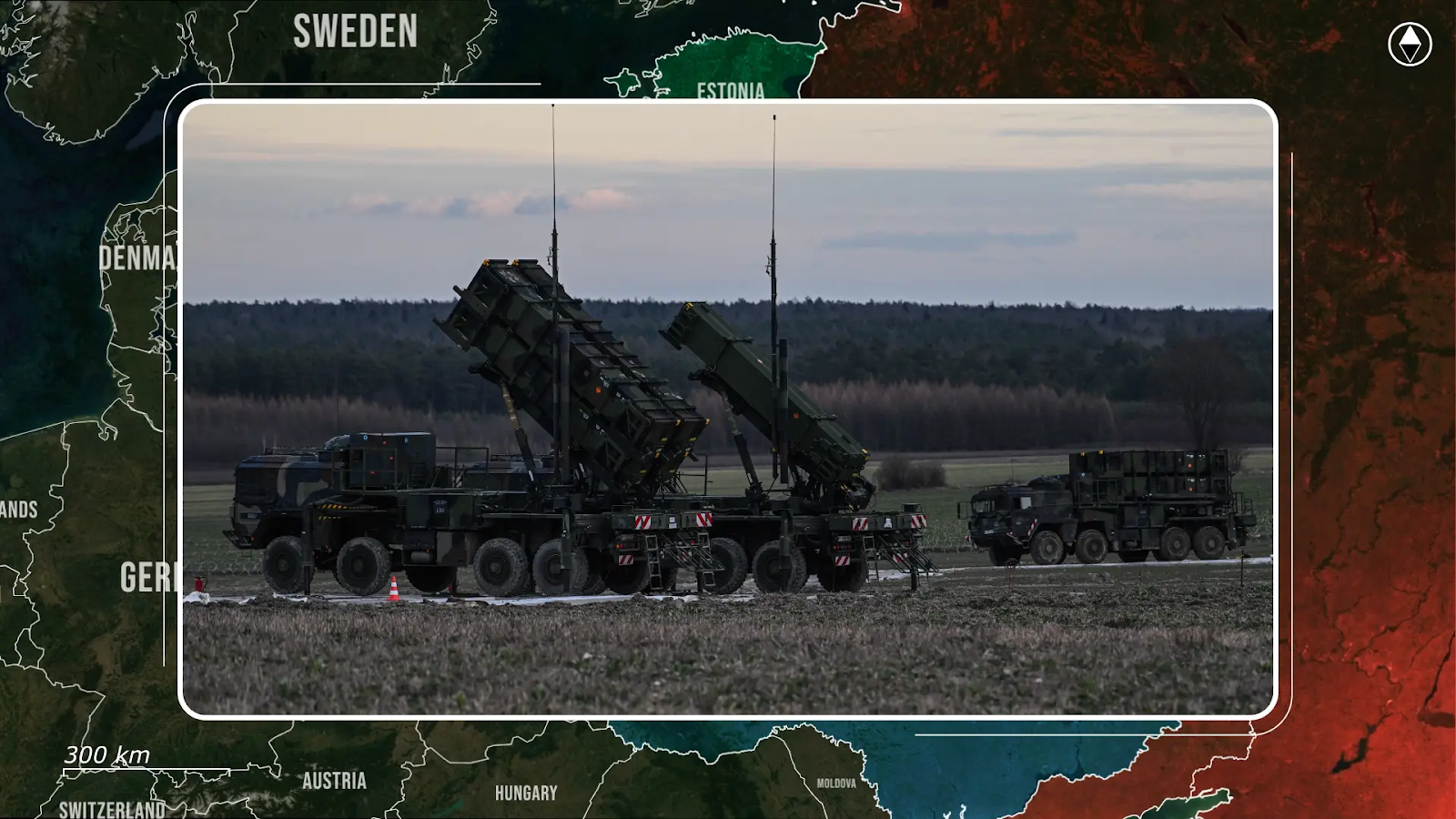
And across all three states, radar tracking, jamming incidents logs, and drone incursions are now analyzed with a single assumption: that any aerial anomaly could be the opening in a broader conflict. The emerging posture is no longer passive monitoring; with new drone detection systems, joint alert protocols, and revised civilian flight corridors, it is becoming forward-leaning, reinforced, and increasingly closed, an Iron Curtain in the air.

Overall, Russia’s latest airspace violations are increasingly escalating and reshaping Nato’s eastern defenses through repeated, calculated provocations that expose gaps, test thresholds, and force reaction. The incursion over Vilnius is a template for how Moscow may continue to pressure Nato’s eastern flank, trying to provoke member states into triggering an open conflict. As Poland’s nightly alerts become routine and Baltic air defenses are forced to harden, the question is no longer whether Nato will respond, but how far that response will go, and as this pattern deepens, the skies over Eastern Europe are no longer a buffer, they are becoming the front line.
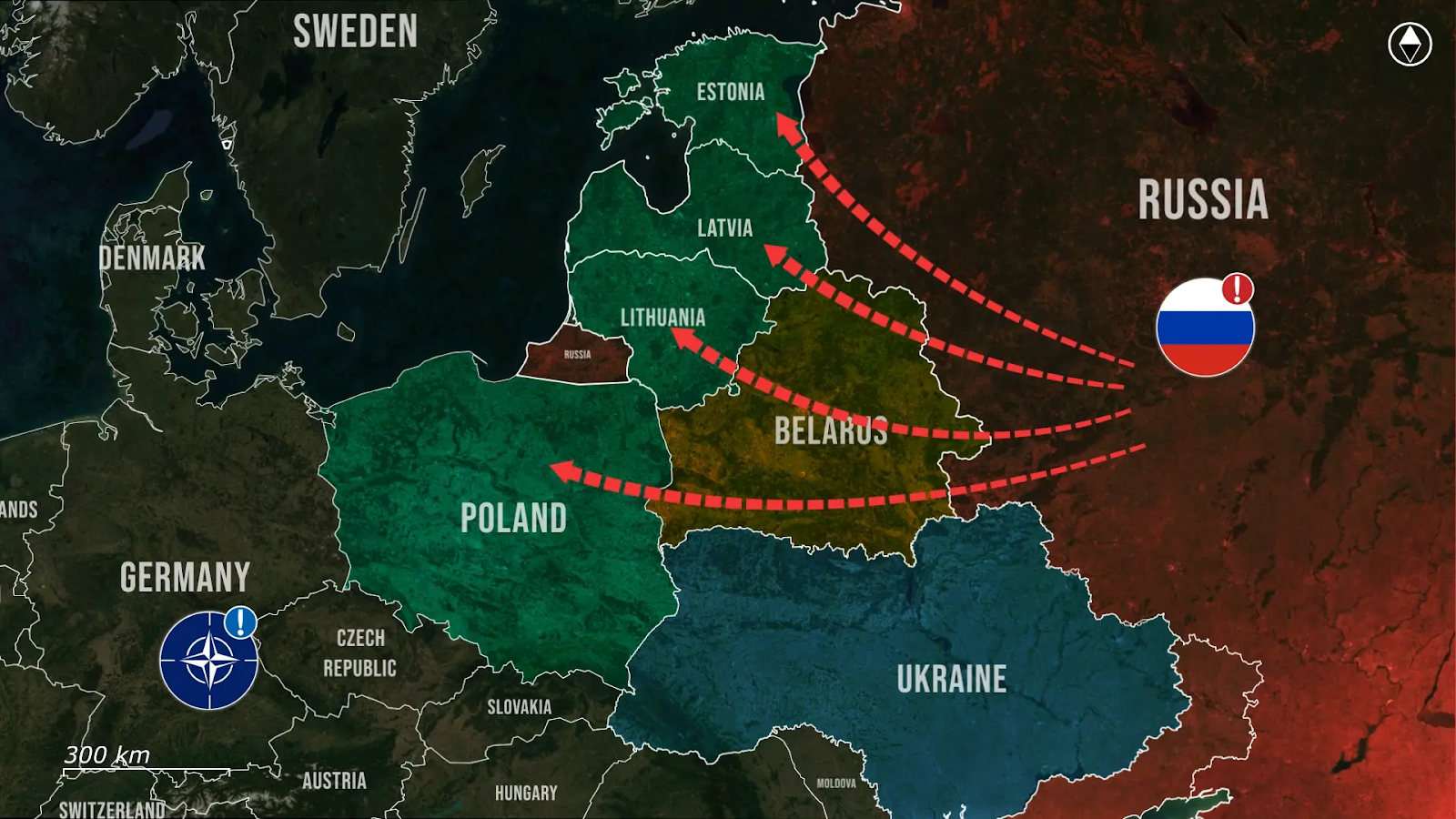
In our regular frontline report, we pair up with the military blogger Reporting from Ukraine to keep you informed about what is happening on the battlefield in the Russo-Ukrainian war
You could close this page. Or you could join our community and help us produce more materials like this.
We keep our reporting open and accessible to everyone because we believe in the power of free information. This is why our small, cost-effective team depends on the support of readers like you to bring deliver timely news, quality analysis, and on-the-ground reports about Russia's war against Ukraine and Ukraine's struggle to build a democratic society.
Become a patron or see other ways to support.
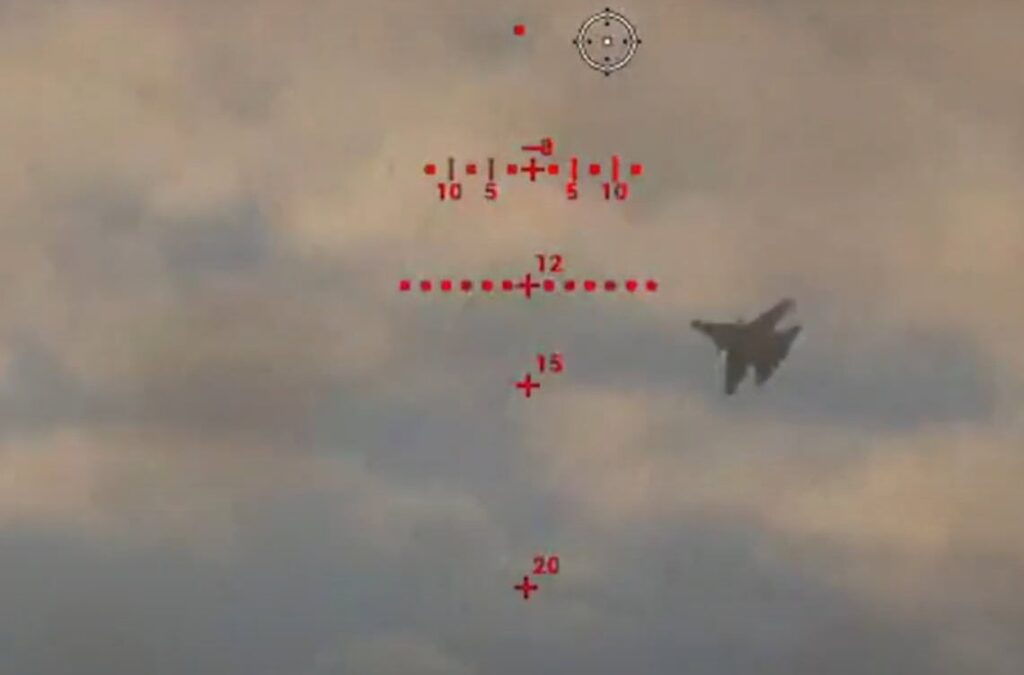

Ukraine has unleashed hell on the occupiers. During the night of 4 August, Ukrainian drones launched a powerful strike on a Russian-occupied airbase in Crimea. One of Russia’s most advanced tactical fighter jets was completely destroyed, and four more aircraft were hit, the Security Service (SBU) reports.
Russian aircraft based near Ukraine is capable of carrying guided bombs. In 2025, Russia plans to produce 75,000 aerial bombs equipped with glide and correction modules, which turn a standard unguided bomb into a precision-guided munition with an extended range. The new number represents Moscow’s plans for a 50% increase in guided bombs production output.
The target of the operation was one of Russia’s main airbases in temporarily occupied Crimea, the Saky military airfield, from which enemy planes take off to strike southern Ukraine and ships in the Black Sea. The base hosts strategic bombers and reconnaissance aircraft. The airfield lies nearly 70-80 kilometers from Ukraine-controlled territory.
The SBU’s “Alpha” Special Center used drones to deliver precision strikes on Russian equipment. As a result of the special operation:
A warehouse containing aviation munitions was incinerated.
The Russians lost at least one Su-30SM, valued at $50 million. These fighters can carry up to 8 tons of bombs and missiles and have a combat radius of up to 1,500 km.
Several Su-24 aircraft were also damaged. These are used for precision strikes on ground targets, with a combat radius of around 560 km. Russia’s losses may reach tens of millions of dollars.
The Security Service of Ukraine confirmed the strike, emphasizing that the operation is a key part of the strategy to destroy enemy logistics and combat capabilities in Crimea.
“Occupiers must remember they will never feel safe on our land!” the SBU stated.

Thanks to your incredible support, we’ve raised 70% of our funding goal to launch a platform connecting Ukraine’s defense tech with the world – David vs. Goliath defense blog. It will support Ukrainian engineers who are creating innovative battlefield solutions and we are inviting you to join us on the journey.
Our platform will showcase the Ukrainian defense tech underdogs who are Ukraine’s hope to win in the war against Russia, giving them the much-needed visibility to connect them with crucial expertise, funding, and international support.
We’re one final push away from making this platform a reality.
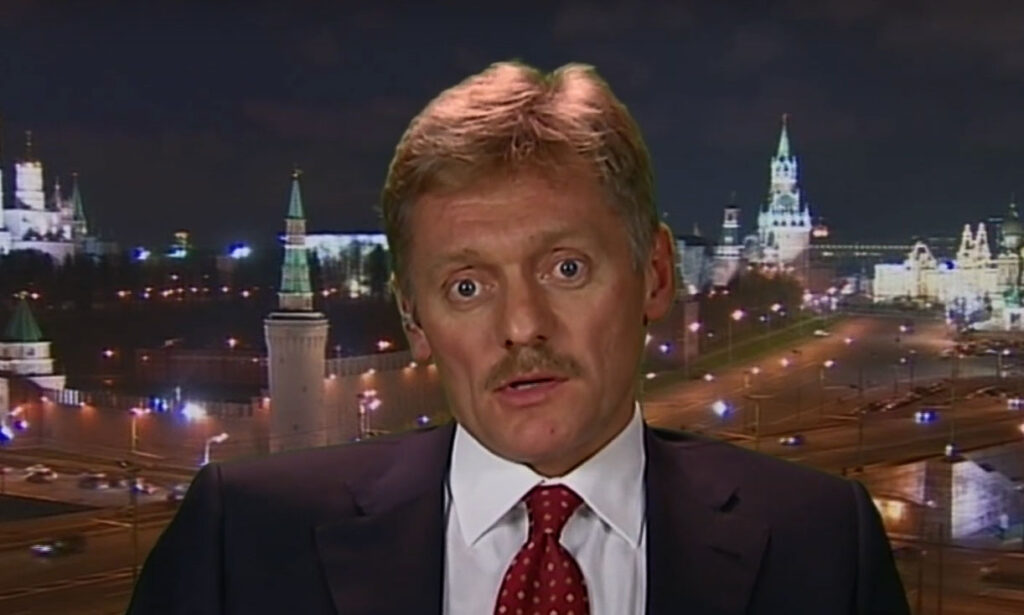

Russia’s position on Ukraine remains unchanged. The Kremlin states it does not rule out a meeting between Russian President Vladimir Putin and Ukrainian leader Volodymyr Zelenskyy but only after extensive preparatory work at the expert level, UNIAN reports.
In practice, Putin does not recognize the Ukrainian government as legitimate and is unwilling to negotiate without full compliance with his demands — which effectively amount to Ukraine’s capitulation.
“Putin is ready to meet with Zelenskyy after preparatory work at the expert level. However, that work has not been carried out yet,” Dmitry Peskov, the Kremlin’s spokesperson, told Russian media.
Russia’s demands, unchanged since summer 2024, include: official recognition of annexed territories, guarantees of Ukrainian neutrality, demilitarization, and a pledge not to join NATO. Moscow insists that only after these conditions are met can any serious talks take place.
Putin shrugs off Trump’s ultimatum and says he’s ready to wait until Kyiv agrees to his conditions to end war
Currently, global observers are watching closely to see whether US President Donald Trump will impose sanctions after the Kremlin refused to comply with his ceasefire ultimatum on Ukraine.
After former Russian President Dmitry Medvedev’s claims, referencing the Soviet automatic nuclear strike system “Dead Hand” in the context of threats against the US, Trump ordered the deployment of two nuclear submarines. Medvedev’s threats came following Trump’s announcement of a 10-day ultimatum that the US gave to Russia to end its war.
This exchange significantly escalated nuclear rhetoric between the two powers, underscoring the growing intertwining of the Ukraine war with nuclear deterrence.
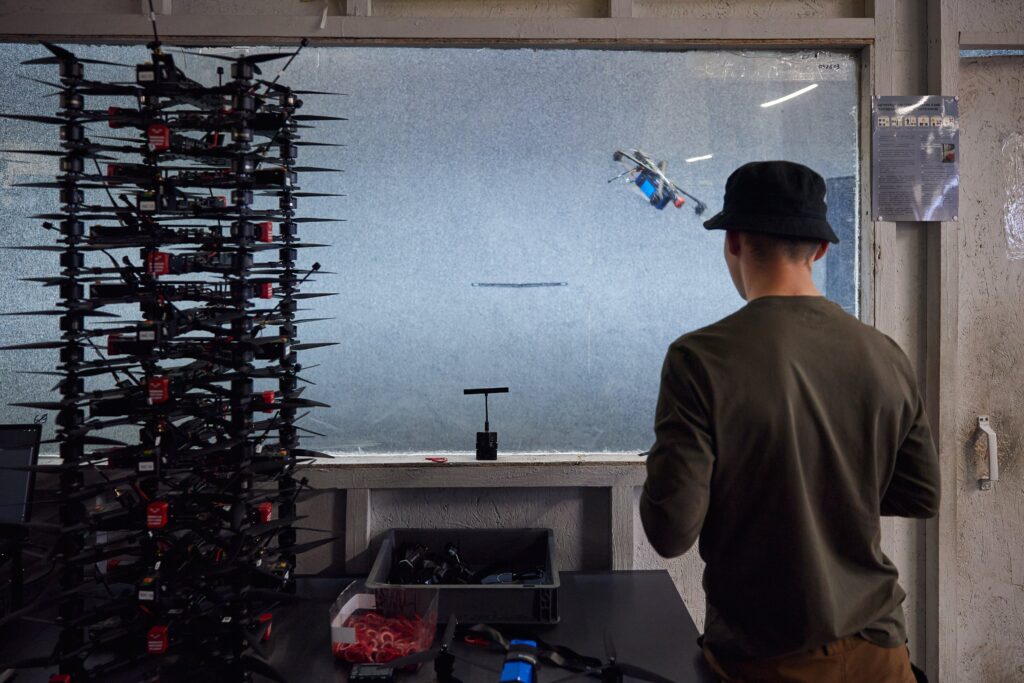

Global tech giants come to Kyiv. Deputy Defense Minister Serhii Boiev has held talks in Kyiv with Axon founder and CEO Rick Smith and head of Dedrone by Axon, Aaditya Devarakonda, Ukraine’s Defense Ministry reports.
The integration of Ukrainian military technologies amid Russia’s war of attrition is becoming a key factor in the country’s survival. Ukrainian engineers are implementing real-time reconnaissance systems, artificial intelligence, and robotic unmanned platforms.
The main topic has been the joint fight against enemy UAVs (drones), technology exchange, and scaling production of electronic warfare tools and drone interceptors.
“We are most interested in electronic warfare (EW) technologies and drone interceptors,” says Boiev.
During the meeting, Axon CEO Rick Smith told the Ukrainian officials that “our offer is not about business but about protecting people.”
Axon is a US leader in public safety, known for TASER stun guns, body cameras, digital platforms, and evidence analysis software, used by police and security agencies in many countries.
Dedrone by Axon specializes in airspace protection from unauthorized drones. Its technology operates in over 50 countries — in prisons, stadiums, airports, and even military units.
Dedrone uses artificial intelligence and machine learning to detect, track, and neutralize drones. The system integrates data from radars, radio frequencies, and video cameras into a unified C2 platform — either local or cloud-based.
Kyiv already cooperates with domestic companies to ramp up production of drone countermeasure systems, but according to Boiev, they “continue searching for new solutions.”
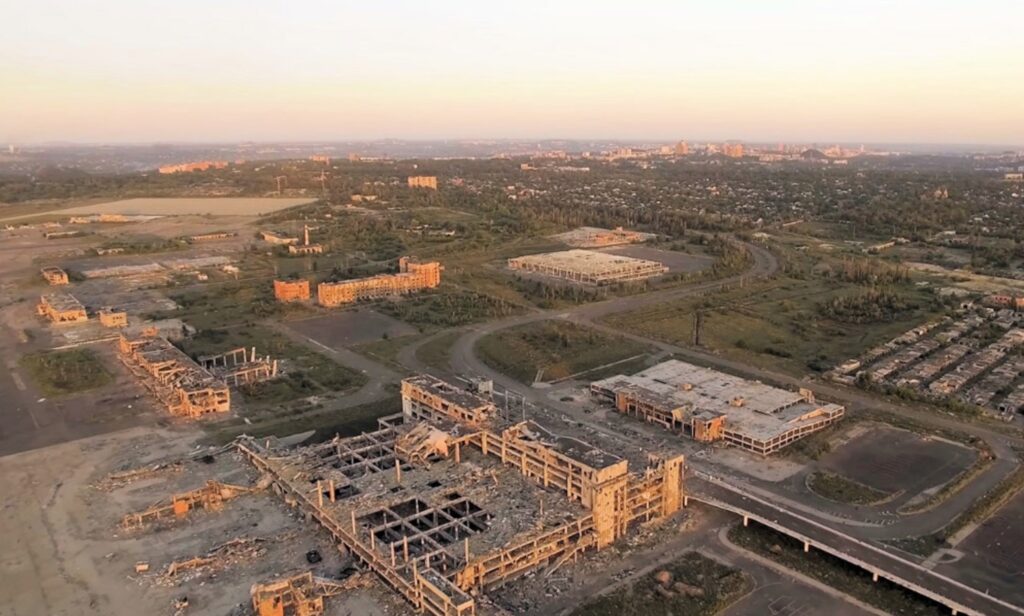

Russia is establishing drone launch infrastructure at the airport in occupied Donetsk City to reduce Ukrainian air defense reaction time, according to satellite imagery analysis by Ukrainian intelligence sources.
A Ukrainian Telegram channel reported on 2 August that July 2025 satellite images show Russian authorities have “partially cleared the fortifications on the runway and started construction work at the parking lots, possibly in preparation for the installation of fuel tanks” at the northern Donetsk City airport.
Ukrainian open-source intelligence group CyberBoroshno analyzed the imagery and reported that Russian occupation authorities are constructing “closed storage areas near the destroyed airport terminal and are preparing manual drone control points, warhead unloading areas, air surveillance posts, and a runway.”
CyberBoroshno assessed the infrastructure development aims to launch “Shahed-type strike drones, Gerbera-type decoy drones, and possibly Geran (Shahed) jet-powered drones.” The group noted that positioning launch sites closer to the frontline will reduce reaction time for Ukrainian air defenses.
The construction comes as Russia dramatically escalated drone attacks in July 2025. Russian forces fired 6,297 Shahed-type kamikaze drones and Gerbera-type decoy targets at Ukraine during the month, according to OSINT analyst Kyle Glen’s analysis of official Ukrainian Air Force reported. Glen called this figure “an absolute monthly record since the beginning of the full-scale invasion.”
The July numbers represent a 1,378% increase from July 2024, when Russia launched 426 drones. Glen said that July’s attack volume “equals the total number of drones launched over ten months of 2024 — from January through October inclusive.”
July marked the first month with more than 6,000 drones reported by Ukrainian Air Force, following June when more than 5,000 were reported for the first time, according to Glen. The analyst said that “July also had periods of relative calm when Russia held off on major launches (likely due to poor weather).”
Glen attributed the escalation to “Russia’s expansion of drone production facilities in the second half of 2024 and early 2025.” Ukrainian air defense forces now face attack volumes that “constantly increase in complexity due to evolving enemy tactics.”
The Institute for the Study of War reported that Russian forces have installed thermal imaging cameras on some Shahed drones to improve strike accuracy. Previous reports indicated Russia prepares thousands of strikes daily.
Russian forces have used occupied Ukrainian territory for long-range drone launches, and continued occupation will “increasingly threaten Ukraine and North Atlantic Treaty Organization (NATO) states,” according to the Ukrainian Telegram channel report.


© Eric Lee/The New York Times


© Reuters
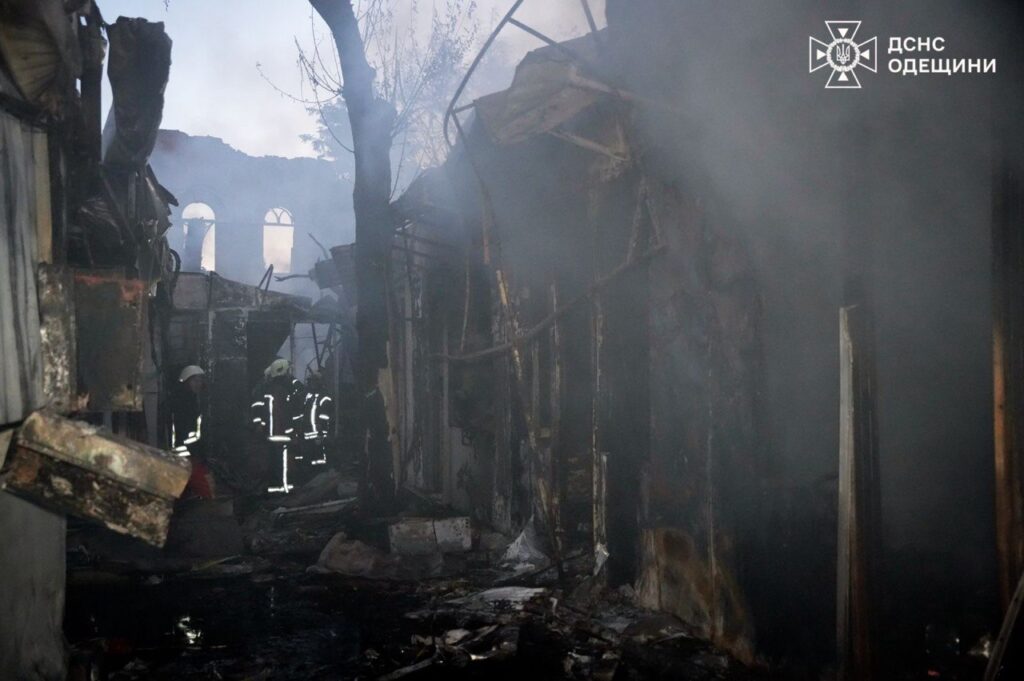

Russian forces launched a night assault on Ukraine using missiles, drones and guided aerial bombs, according to Air Force data.
Three people were injured in Russian shelling of Dnipropetrovsk Oblast, including a 4-month-old infant who remains in critical condition, Dnipro Oblast Governor Serhii Lysak said.
Nikopol, Marhanets, Myrivska, Pokrovska communities were under Russian fire.
According to Lysak, Russian forces shelled the Nikopol area with artillery, attacked with FPV drones and dropped ammunition from UAVs. A transport company in Marhanets was damaged during the assault.
The attacks extended beyond Dnipropetrovsk Oblast. In Kherson Oblast, one person died in Russian artillery fire on Antonivka village.
“From early morning, Russians cut short the life of a Kherson Oblast resident, for a man born in 1979,” Kherson Oblast Governor Oleksandr Prokudin said.
In Odesa, a strike on a radio market sparked fires that destroyed dozens of trading pavilions containing electronics and household appliances, the State Emergency Service reported. A separate fire erupted at an abandoned dormitory.
The Russian military regularly attacks Ukrainian oblasts with various types of weapons, killing civilians and destroying hospitals, schools, kindergartens, energy and water supply facilities.
The Ukrainian authorities and international organisations qualify these strikes as war crimes by the Russian Federation and emphasise that they are of a targeted nature.